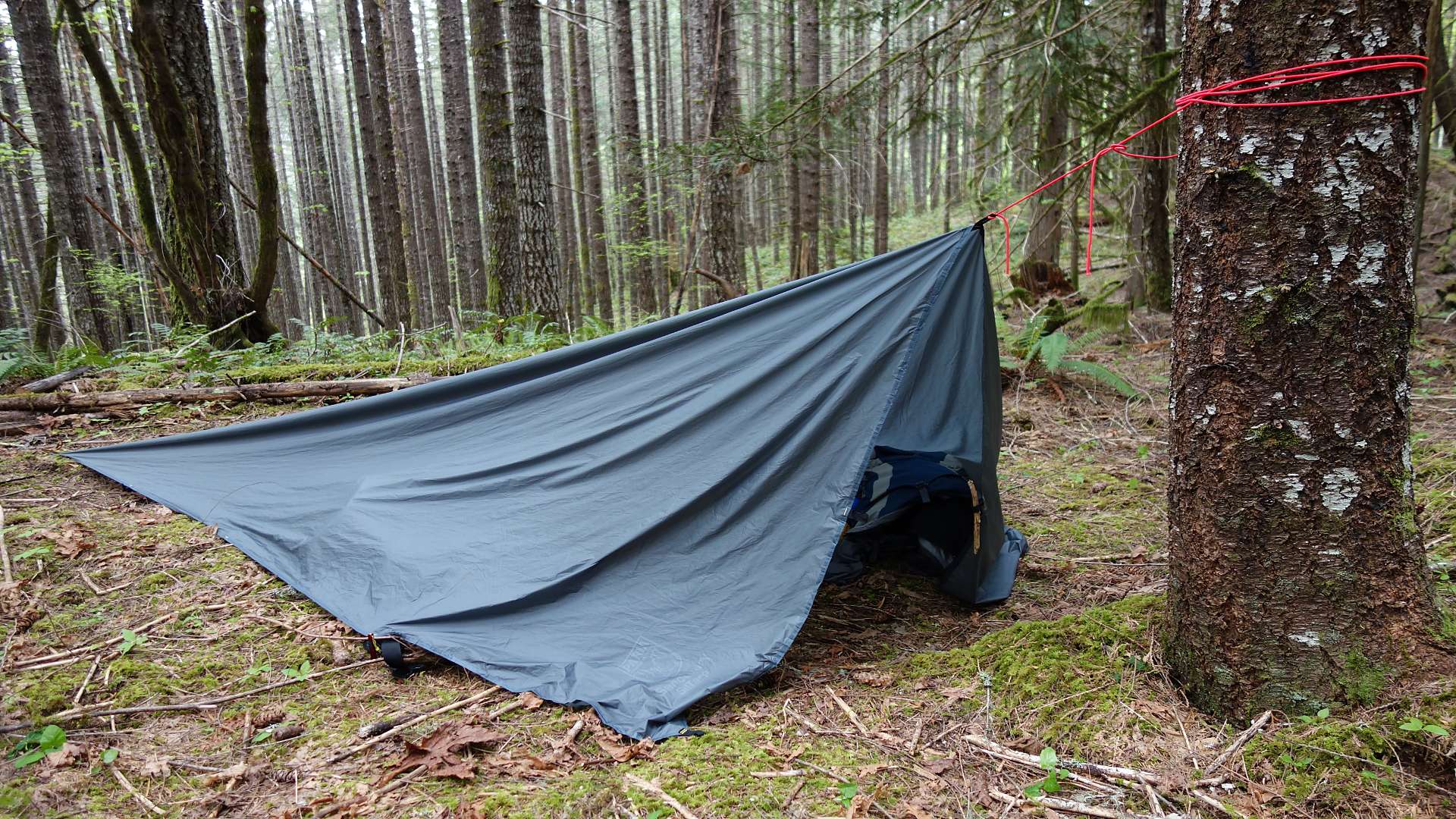Podcast: Download (Duration: 28:07 — 26.7MB)
Show Notes: Episode 182
Today on the First 40 Miles, what do you get when you mix the ancient Japanese art of paper folding with a huge sheet of silnylon? Tarpigami. We’ll talk tarps today and learn about some of the risks and rewards of changing up your shelter. Then, an ultralight shoe that fits in on the trail, in the creek or just bumming around camp. For Today’s Hack, an idiot-proof tarp shelter that you, yes you, can put up in seconds, plus a lovely little poem to go with it.
Opening
- Tinkering with tarps lately…
- Watched tarp pitching videos to learn different pitches
- Planning on trying out a tarp instead of a tent on upcoming trip
Top 5 Reasons Why I Want to Try Using a Tarp as a Shelter
They are versatile
- A rectangular or square tarp can be pitched in almost limitless ways.
- Some are designed to withstand wind, some are better for heavy rain, some are dead simple to pitch, some require no trees—just a trekking pole or two, some can be pitched close to a small fire (survival style)
- Tarp Info Page: David B. Macpherson http://www.equipped.org/tarp-shelters.htm
Lighter than tents
- For the most part…
They are open
- …for good or bad (mosquitoes and other visitors)
- Superior ventilation
Cheaper than tents
- Paria makes good backpacking tarps
Requires learning new skills
- Knot tying
- Tarp designs, of which there are many…
- Weather
SUMMIT Gear Review: FitKicks Shoes
Structure
- Top is a stretchy spandex material, it covers the entire top of your foot
- Faux suede toe guard at the tip of the shoe and an elastic strap that goes diagonally across the shoe (NOTE: the shape of the toeguard on mens and women’s styles are different.)
- About an eighth inch of padding inside the shoe, which molds to your foot as you use it-and will eventually compress over time.
- Flexible sole
- No laces.
Utility
- Can be worn with or without socks
- If you’re used to minimalist shoes (thin sole, very flexible, no arch support) then you can try hiking in these shoes.
- Most people are going to love these as camp shoes. Get out of your hiking shoes, slip these on and let your feet relax. Super comfortable.
- You can use these as river crossing shoes, camp shoes or minimalist hiking shoes. If they get wet, they can easily be hung to dry by attaching the shoe’s elastic strap to the outside of your pack
Mass
- Weighs 7.2 ounces total!
- NOTE: Crocs weigh between 11 and 16 ounces
Maintenance
- Rinse off any chunky stuff like mud, grass, or sand. Then put Fitkicks in the washing machine with like colors, using mild detergent and cool temperatures.
- Fitkicks can be washed just as well by hand—which is how I cleaned mine
- Air dry. Fitkicks dry quickly. Fitkicks shoes may be worn while still damp if needed, but they should NEVER be placed in the dryer.
Investment
- $20-25 depending on size and style
- Can be purchased online or found at Walmart, Kohls, and Bed Bath & Beyond.
Trial
- Wore these on a 2 mile hike
- No snagging, even though I tromped through some pretty rugged brush and muddy spots.
- Super comfortable
- I wore mine without socks, but you can wear them with socks, too
- Soles are not grippy—which is important to know if you plan on doing actual hiking in these. But, soles are very flexible,
- Pretty fun selection of prints for shoes
- Also they have kids’ sizes
- Lightweight, inexpensive, versatile, comfortable, low-maintenance,
Backpack Hack of the Week™: Plowpoint Tarp Shelter
I like this tarp set up. It’s a fast, easy, idiot proof and secure shelter. Everyone should have at least one tarp shelter in their toolbelt of knowledge. I like the Plowpoint as a beginner tarp shelter because it is simple.
- one square tarp (10’ x 10’ or 3m x 3m)
- one tree
- three stakes or sharp sticks
- one piece of cordage or rope
Take any corner of your square tarp and tie it to the tree, about 5 feet up. Take the opposite corner of the tarp, pull it taught and stake it down. Then stake out the other two corners, pulling taut and taking down.
NOTE: If you wrap the rope around the tree multiple times, then secure it with whatever knot is in your knot core of knowledge—even the overhand knot, the friction from wrapping the rope around the tree will be enough to hold the tarp in place.
The plowpoint tarp shelter is easy to learn, easy to remember quick to set up and will give you some temporary shelter if you need it.
Mnemonic: Tie a corner to a tree, then stake it out diagonally.
Pull it taught. Stake the sides. Grab your pack and get inside.
Trail Wisdom
Hedge or qualify as we will, man is part of nature.
—John Burroughs

